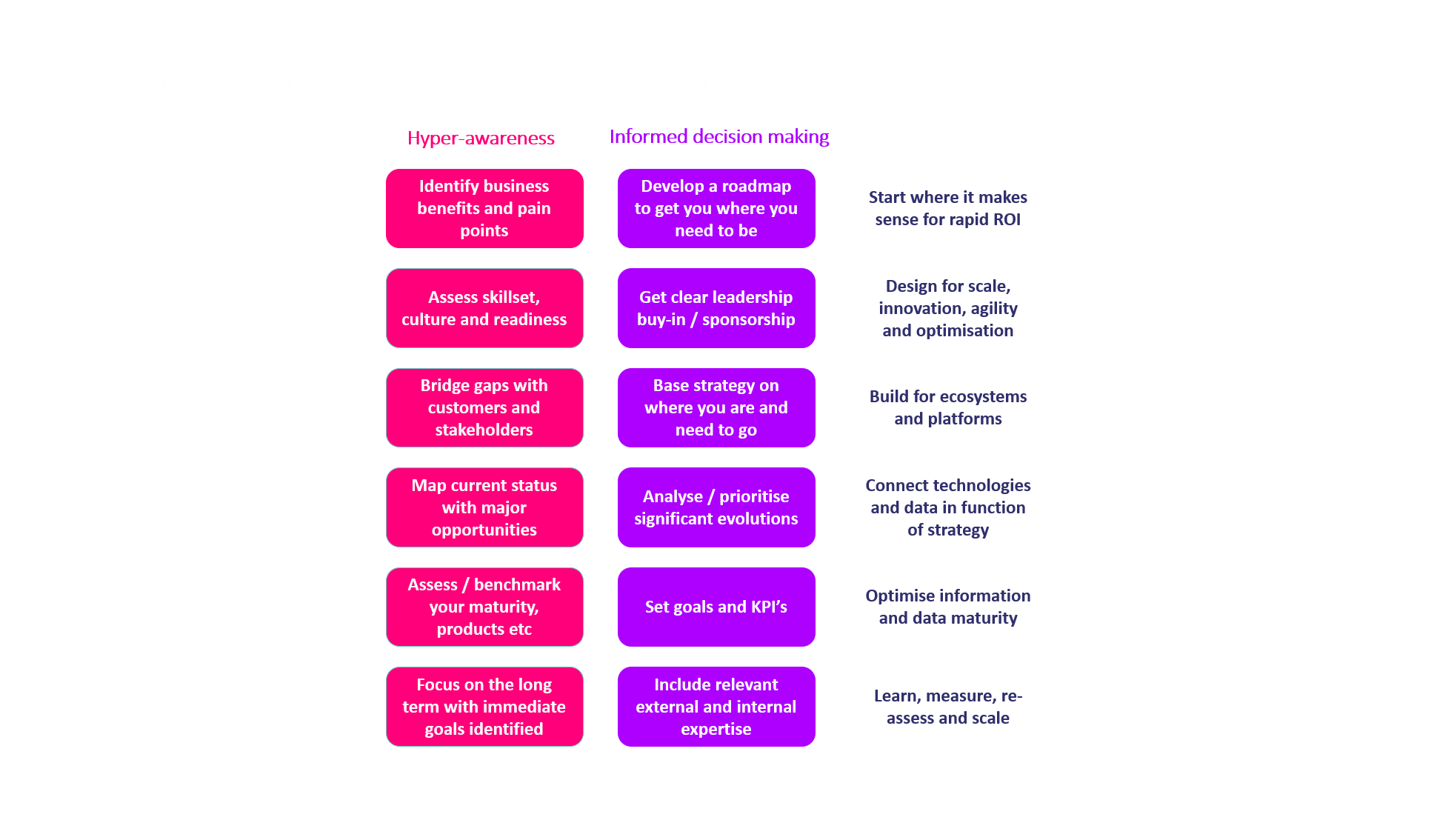All the elements of recovering a failing IT project that we’ve previously described are important and can become critical when things start to go wrong. They all need to be attended to but if we had to emphasise any particular factors, it would be Inclusion, Communication and Culture – from the outset and throughout. Get this wrong, and your project is far more likely to fail.
It is far better to “don’t fail” at all and “succeed by identifying, planning and realising the anticipated project aspirations”. We wrote in our article “Why Do So Many IT Project ‘Fail’?” that we would go on about Discovery and so we shall. A full Discovery phase helps our clients do better than succeed and can help them avoid the relative ‘failure’ of passing up on unrealised efficiency gains and additional revenue streams getting “left on the table”. At the risk of repeating ourselves, get your business unit managers involved to avoid missing out on those unexplored revenue streams. We really can’t emphasise this enough.
Some clients choose to skim over this Discovery Phase, preferring to “get cracking” with actual technological change. This can be problematic as the phase really is essential to avoiding expensive adjustments and ‘failure’ corrections later in the project. We always emphasise that a little time spent appropriately upfront can save an awful lot of time, cost and energy further down the line.
The figure below itemises 18 elements for consideration in a relatively generic Discovery Phase. Those 18 elements underpin the seven components of a full Digital Transformation that our clients undertake with Panamoure’s expertise and guidance. It assesses elements that will enable the client to act swiftly on the back of informed decision making, an improved self-awareness of the company’s positioning within its sector and its own internal IT infrastructure and human capital.

For some projects this level of complexity is not always necessary or desirable. It completely depends on client needs and project requirements but considering each of those 20 items at the outset serves to highlight important gaps and what critical steps can and should be addressed to deliver a rapid Return on Investment. But if you are attempting a significant digital transformation exercise and limiting your Discovery, that is a missed opportunity to get your business to think in a different way and to eliminate blinkered viewpoints due to compartmentalisation. A thorough review of this scale is also a very good way of minimising the risk of project ‘failure’.
Going beyond some form of Discovery phase can be particularly helpful when things have gone off kilter. As a final reminder, here is a final check list of what Panamoure considers as essential to preventing an IT project in some way ‘failing’:

Doing all this at the early part of your project formulation, you will stand a much better chance of it being delivered on time, within budget, and meeting project expectations. That’s how to get it right first time.
On a final note, here’s another of our client cases, which illustrate how we helped out a construction business that was struggling with its F&O ERP implementation. As you’ll read in Dedicated Captive Team Providing BAU Support To Business Users | Panamoure Consulting our recommended solutions and managed service support has delivered strong value through significant operational cost reduction to a number of our clients.
Thank you for taking the time to read. If you are heading out on a new project or require some advice on righting an exercise that has gone off-scope in some way, then please do reach out. Our teams love delivering a ‘good fix’. If that’s what you need, we would love to hear from you.





